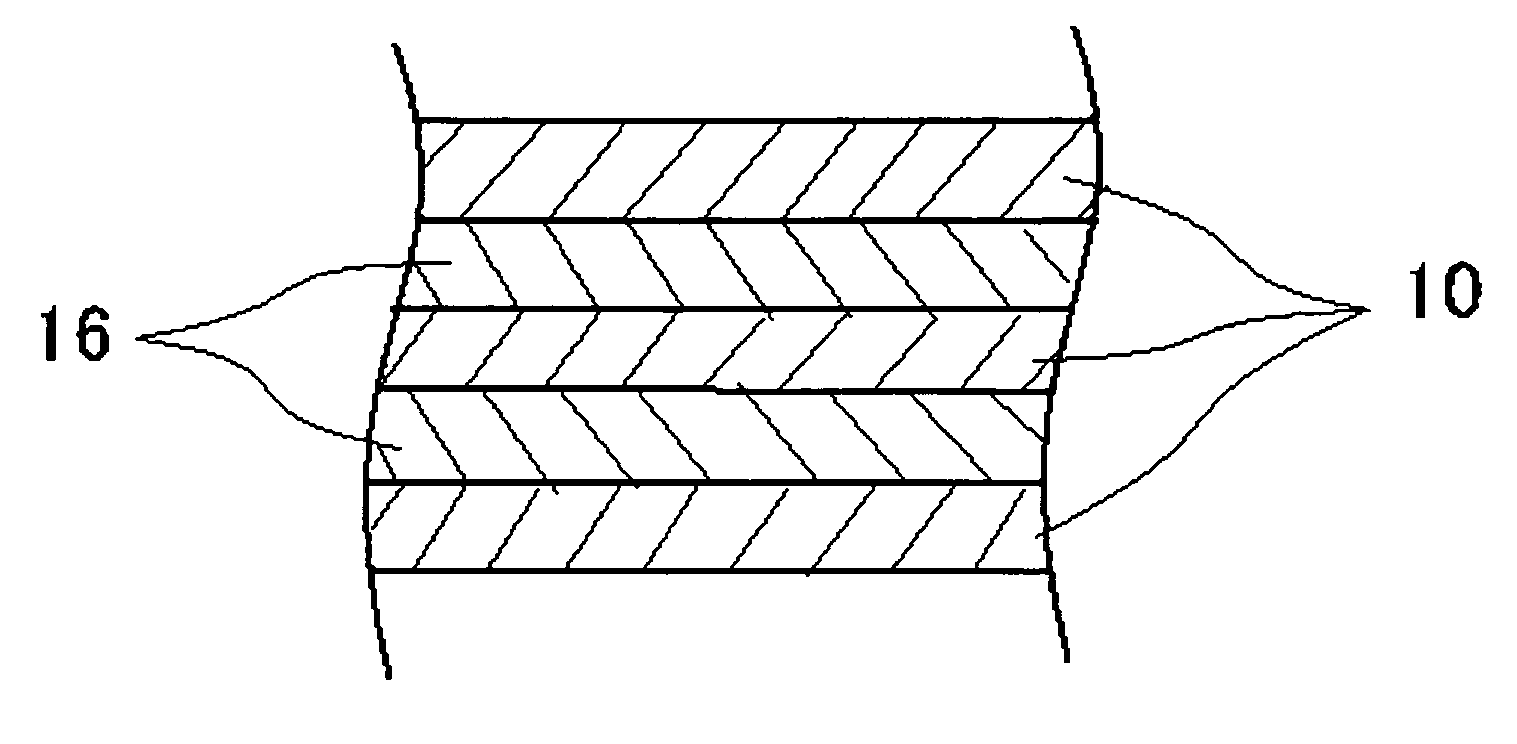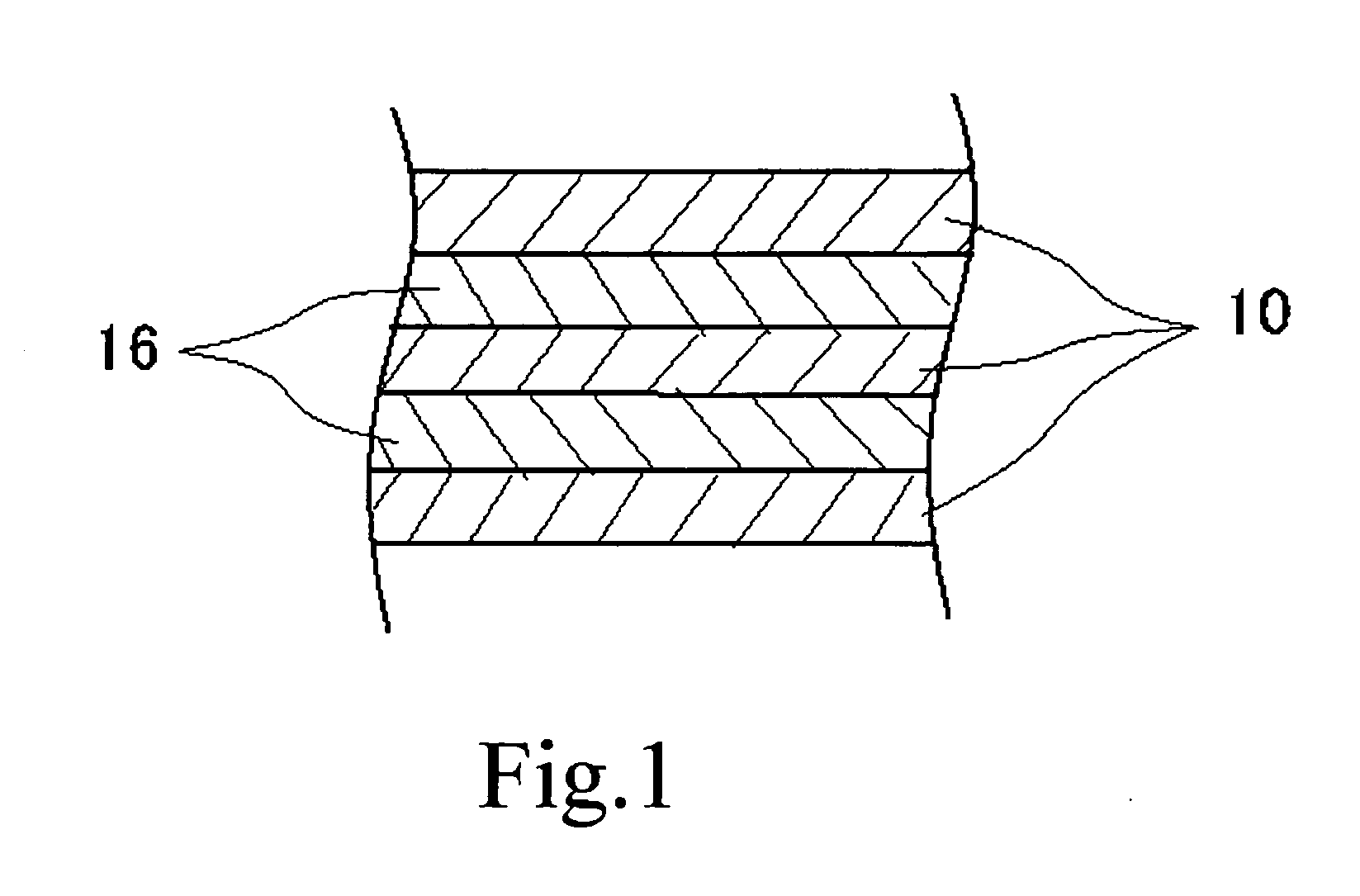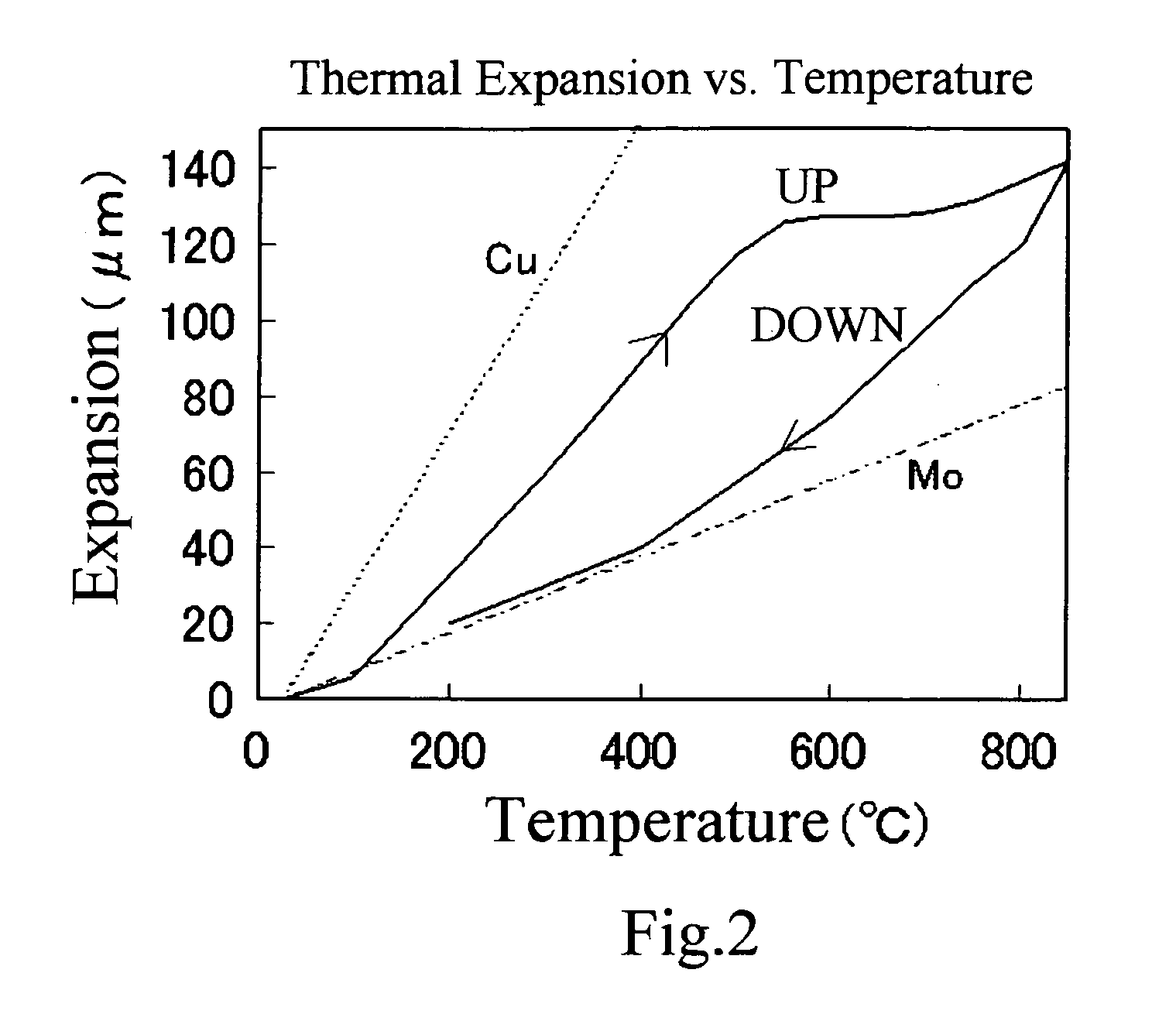Cladding Material and Its Manufacturing Method, Press-Forming Method, and Heat Sink Using Cladding Material
a technology of cladding material and manufacturing method, which is applied in the field of cladding material and its manufacturing method, press-forming method, and heat sink using cladding material, can solve the problems of insufficient thermal conductivity of above-mentioned cladding material, low thermal expansion coefficient and higher thermal conductivity, and heat distortion or camber generated in this heat sink. , to achieve the effect of low thermal expansion coefficient, easy fabrication and high thermal conductivity
- Summary
- Abstract
- Description
- Claims
- Application Information
AI Technical Summary
Benefits of technology
Problems solved by technology
Method used
Image
Examples
example
[0053]Below, examples of this invention are described with comparative examples.
[0054]As lamination structures composed of Cu and Mo as examples of this invention, the cladding materials in which the number of layers and the thickness of each layer were varied, were fabricated as examples 1-15. On the other hand, the cladding materials in which the thickness of each layer of the 3-layered structure of Cu / Mo / Cu was varied, were fabricated as comparative examples 1-15 as comparative examples. The thermal expansion coefficient and the thermal conductivity in these samples were measured. All examples and all comparative examples were fabricated by the manufacturing method shown in FIG. 3. The thermal expansion coefficients were calculated as averages while cooling from 850° C. to 30° C. in argon atmosphere, using Dilato Meter made by MAC Science co., ltd, by a procedure described in JISH7404. Each sample used for measurement of thermal expansion coefficient was made into the size of 20 ...
PUM
| Property | Measurement | Unit |
|---|---|---|
| thermal conductivity | aaaaa | aaaaa |
| thickness | aaaaa | aaaaa |
| temperature | aaaaa | aaaaa |
Abstract
Description
Claims
Application Information
 Login to View More
Login to View More - R&D
- Intellectual Property
- Life Sciences
- Materials
- Tech Scout
- Unparalleled Data Quality
- Higher Quality Content
- 60% Fewer Hallucinations
Browse by: Latest US Patents, China's latest patents, Technical Efficacy Thesaurus, Application Domain, Technology Topic, Popular Technical Reports.
© 2025 PatSnap. All rights reserved.Legal|Privacy policy|Modern Slavery Act Transparency Statement|Sitemap|About US| Contact US: help@patsnap.com



